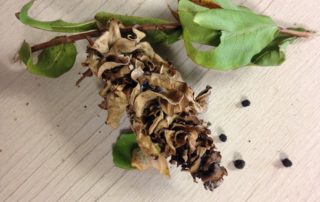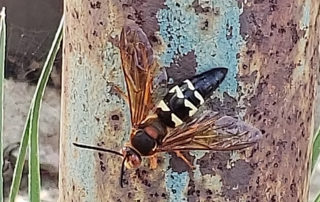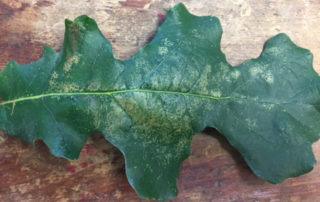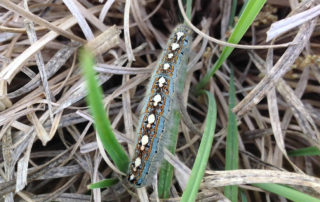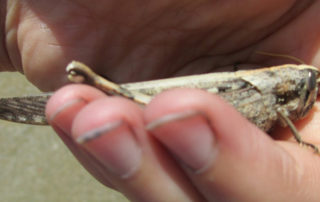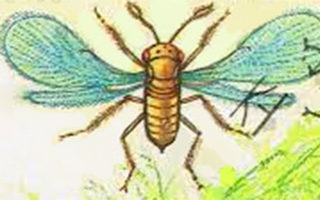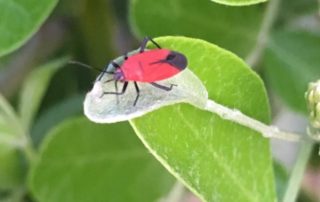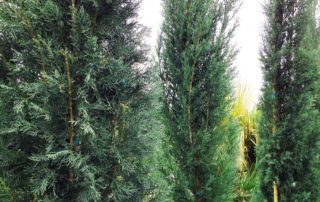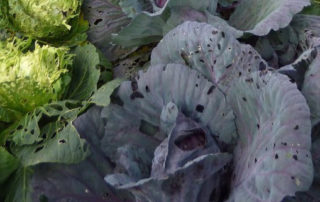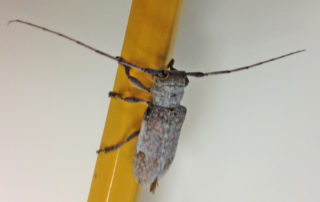Bagworms
All About Bagworms Bagworms have a fascinating life cycle! After hatching, each caterpillar spins a silk and leaf “bag” around itself. These bags are protective against predators, and are easily carried by the caterpillar as it crawls around feeding on trees and shrubs. If you see one of these little bags moving, look closely and you will see the head and front legs peeking out of the front of the bag. The caterpillars feed and grow throughout the summer, then pupate in August or September. The male emerges as a [...]

